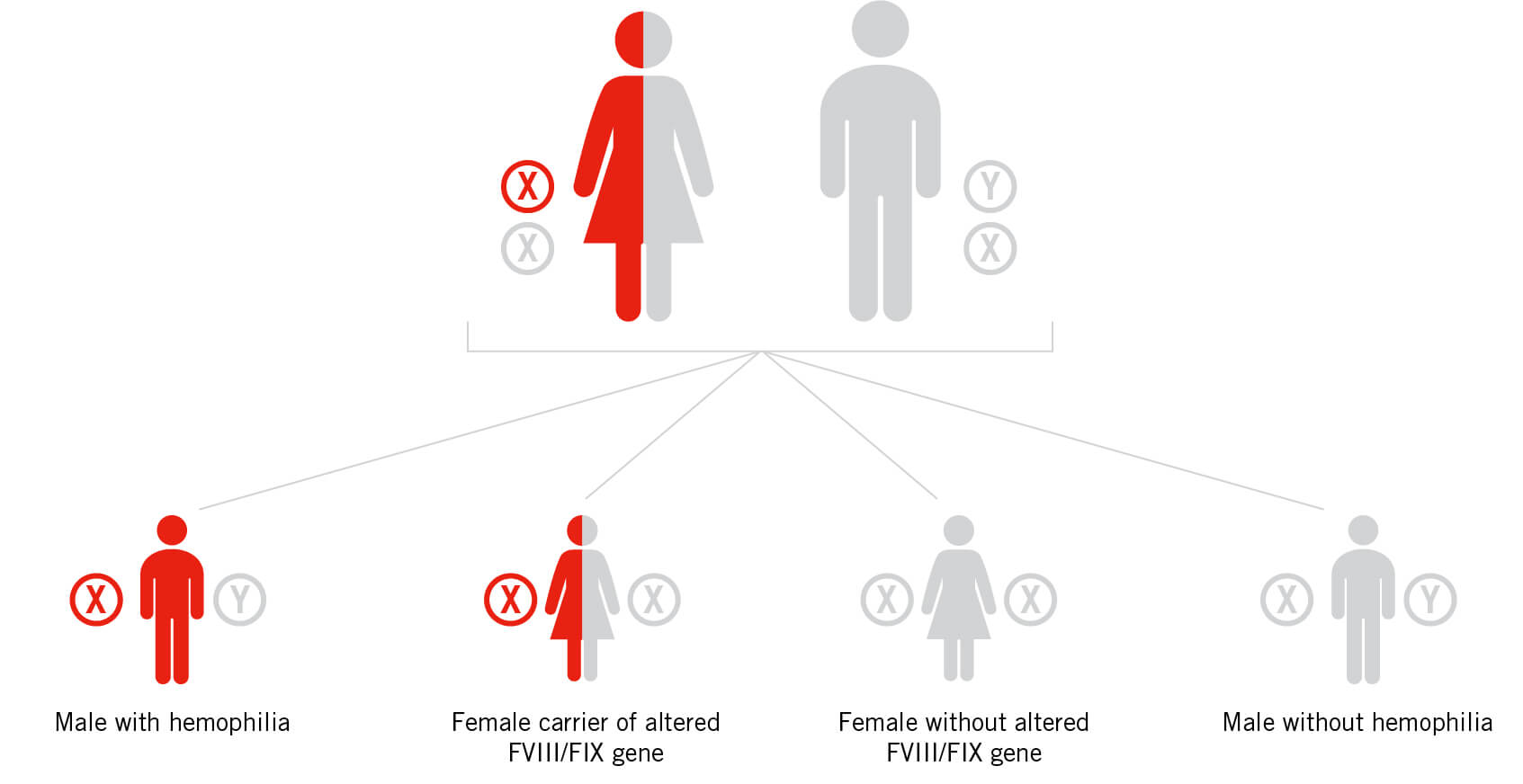The basics
Hemophilia is a type of bleeding disorder that causes the blood to take a long time to clot. This can cause abnormal bleeding or bleeding that won't stop. People with hemophilia do not have enough clotting factor VIII or IX in their blood; sometimes, they do not have any. Depending on the level of clotting factor a person does have in their blood, hemophilia is classified as mild, moderate, or severe.
Hemophilia Severity
Mild
Moderate
Severe
Factor VIII/IX Level
More than 5% of normal
1% to 5% of normal
Less than 1% of normal
The genes associated with hemophilia are located on the X chromosome. This means that:
- A man with hemophilia cannot pass on the condition to his son
- A woman who carries the altered gene on her X chromosome has a 50% chance of passing on hemophilia to her son and a 50% chance of passing down carrier status and, depending on the level of FVIII or FIX, potentially hemophilia to her daughter
- Hemophilia occurs mainly in men, but women may also have hemophilia if their carrier status substantially lowers their levels of clotting factor or if both X chromosomes contain a copy of the altered gene

Common signs and symptoms of hemophilia
- Bleeding following injury or surgery
- Spontaneous bleeding (spontaneous means that the bleeding occurs without an apparent cause)
- Easy bruising in early childhood
- Pain and swelling resulting from bleeding into joints and muscles
- Blood in the urine or stool
- Heavy bleeding following circumcision
- Heavy menstrual periods
- Bleeding in the brain
TREATING HEMOPHILIA A
Hemophilia A (factor VIII deficiency)
- The most common form of hemophilia ≈1 in 5000 male births (or 1 in 10,000 people)
- Also called "classic" hemophilia
TREATING HEMOPHILIA B
Hemophilia B (factor IX deficiency)
- The second most common form of hemophilia occurs in ≈1 in 25,000 male births (or 1 in 50,000 people)
- Sometimes called Christmas disease after Stephen Christmas, the first patient described with this disease

